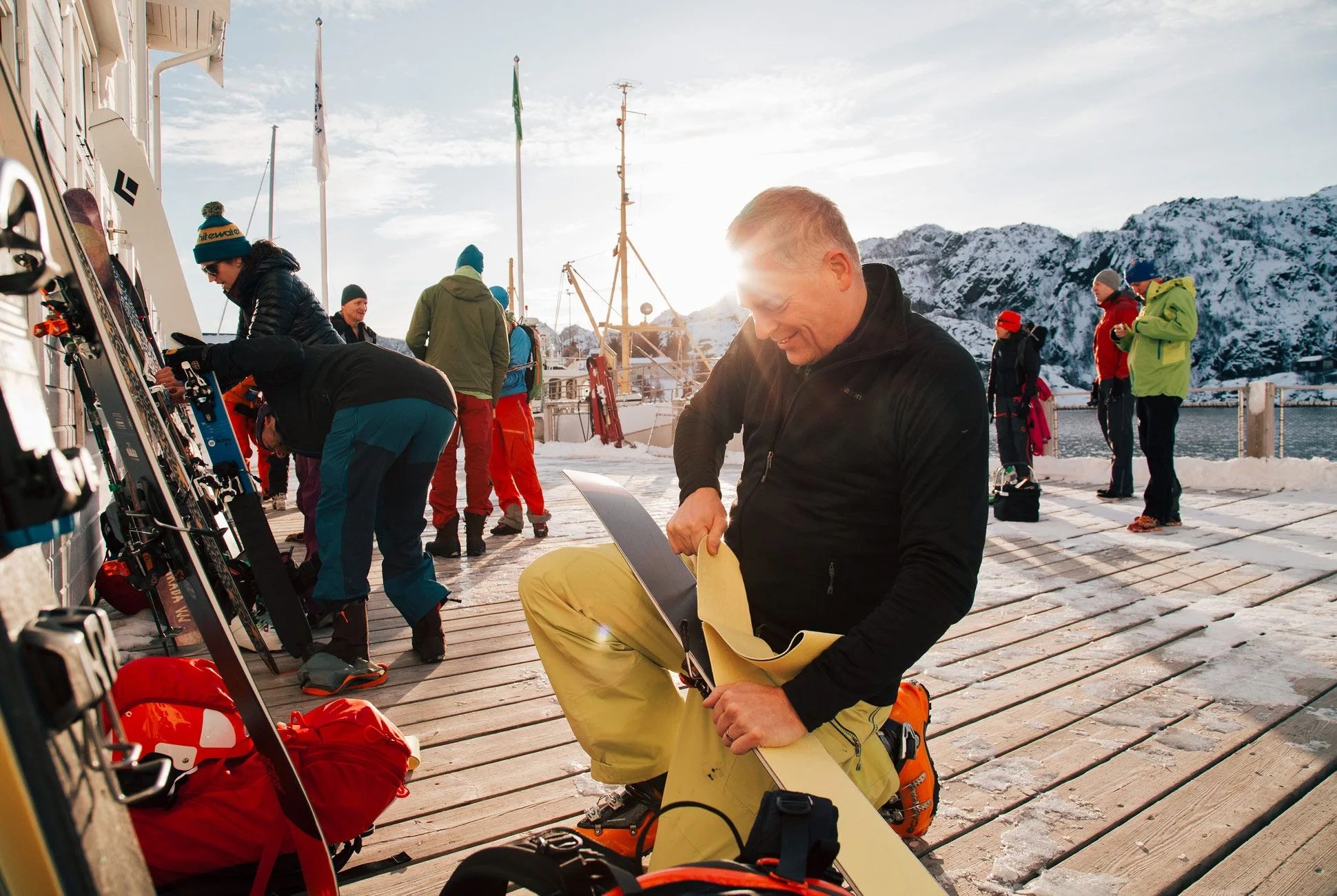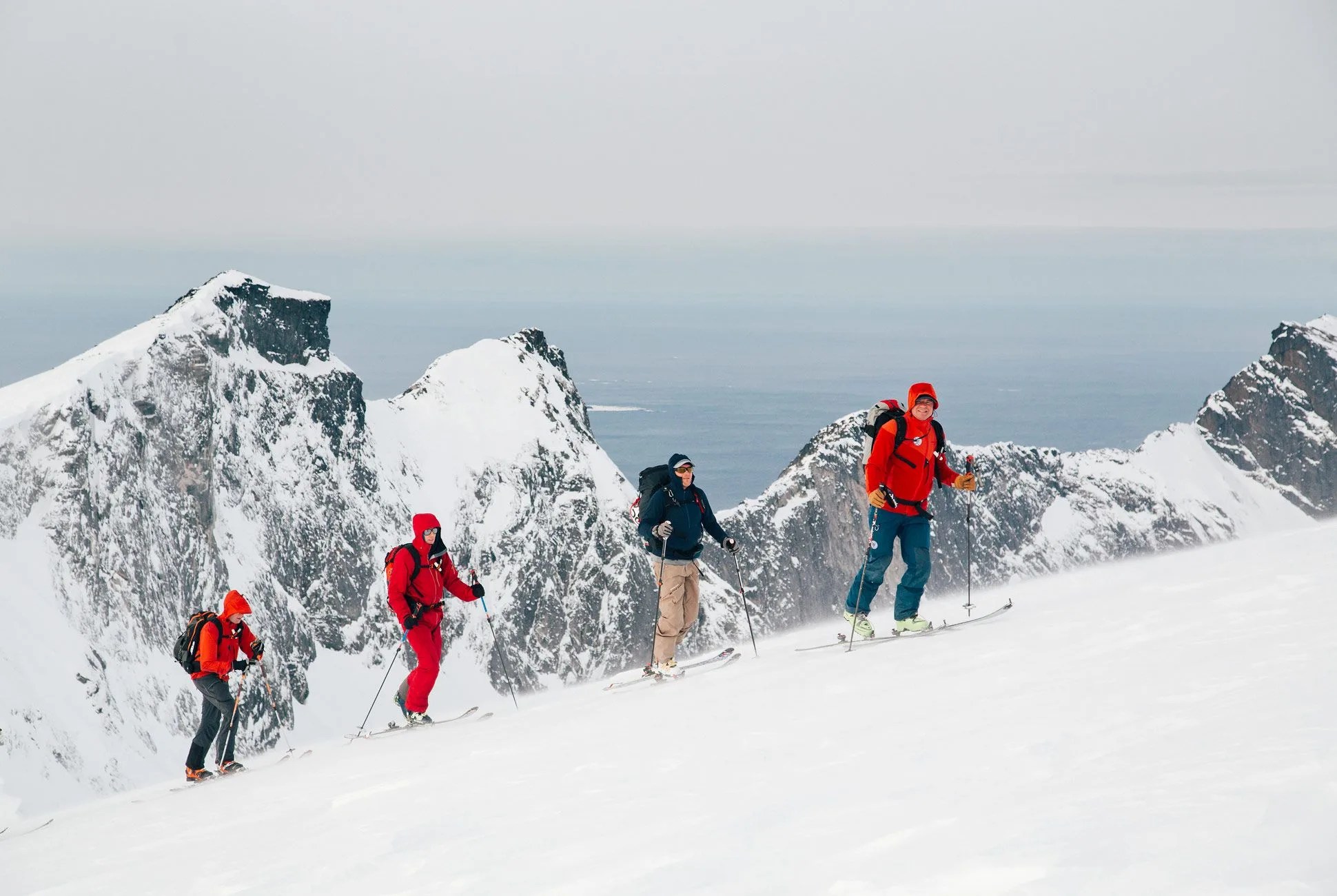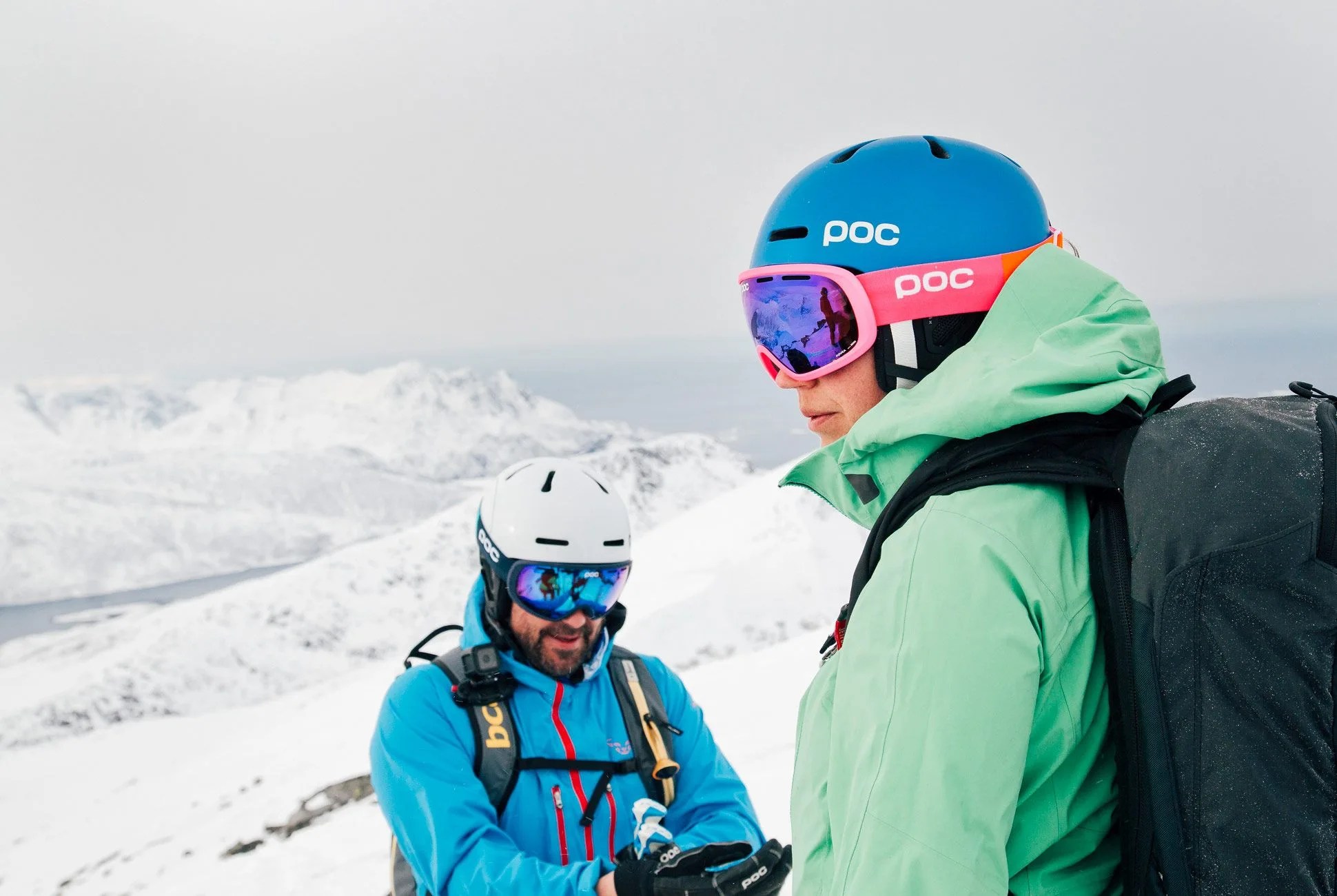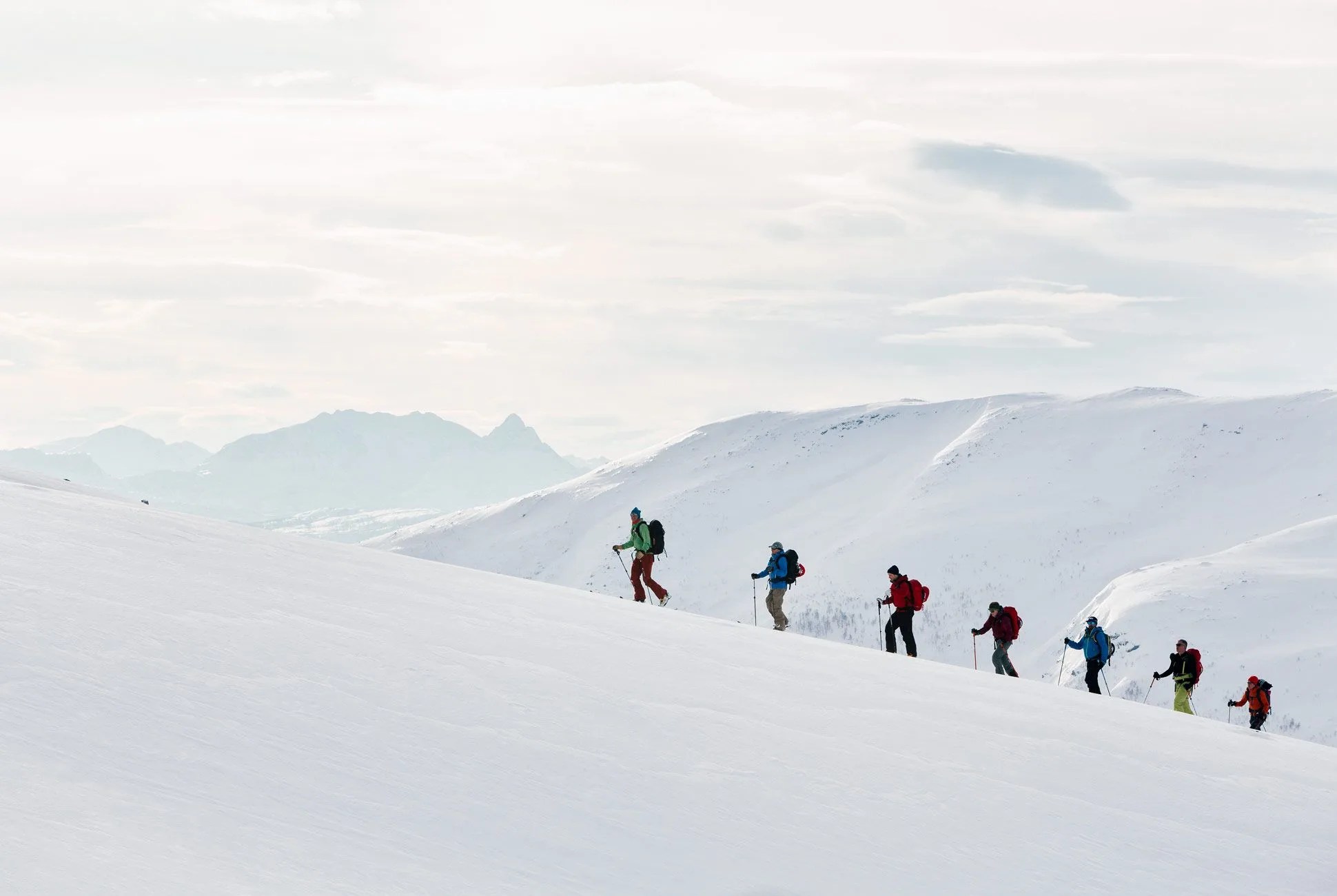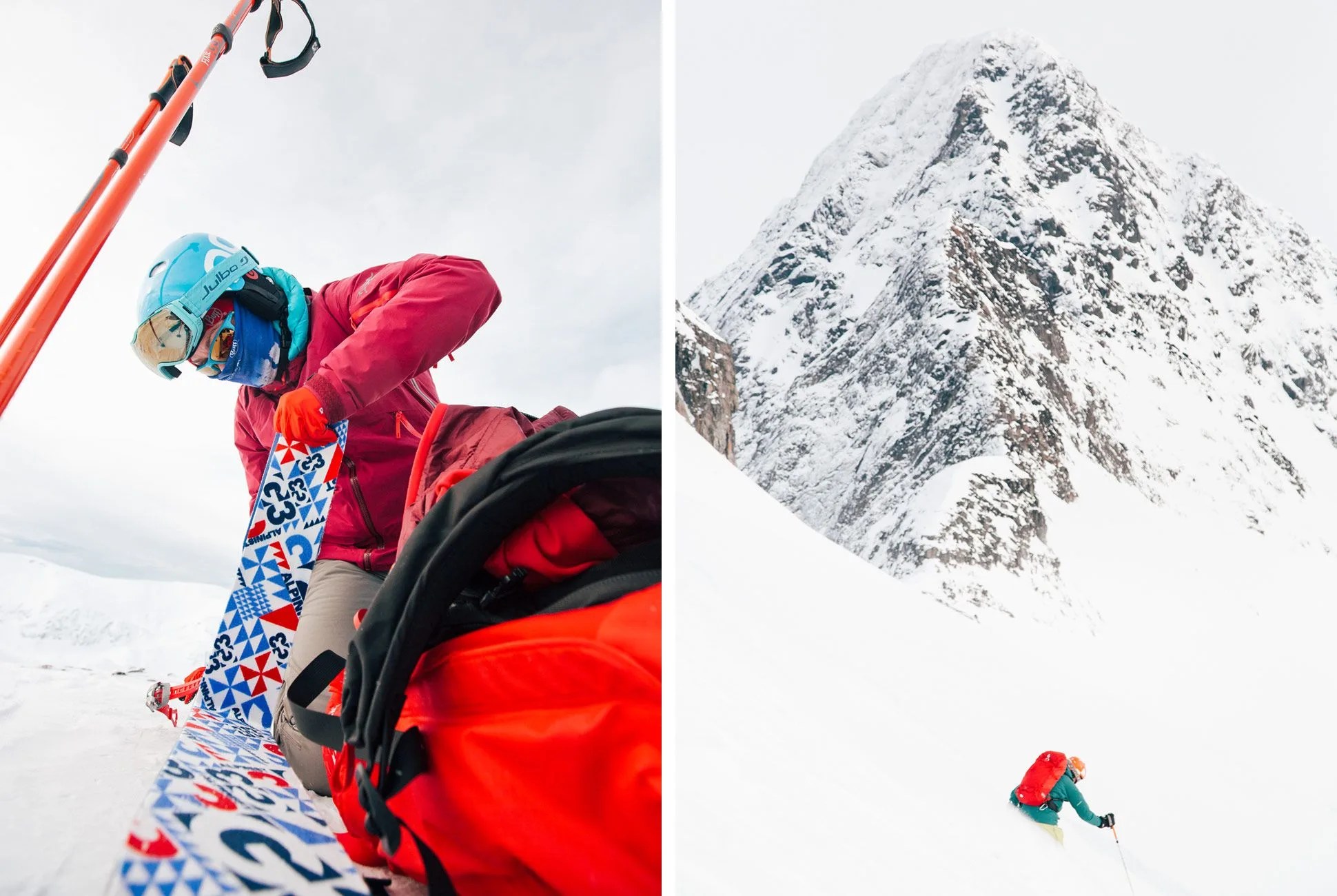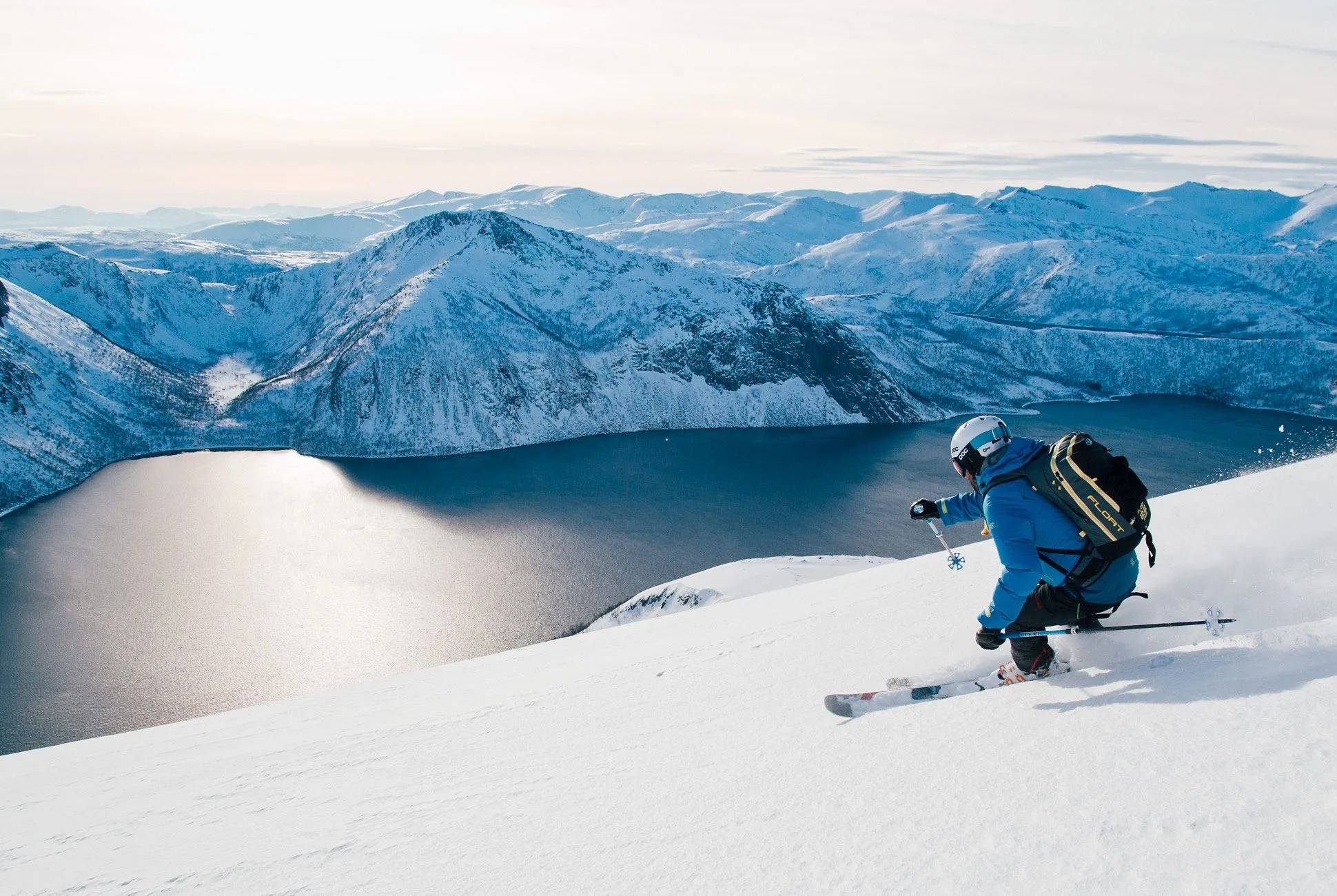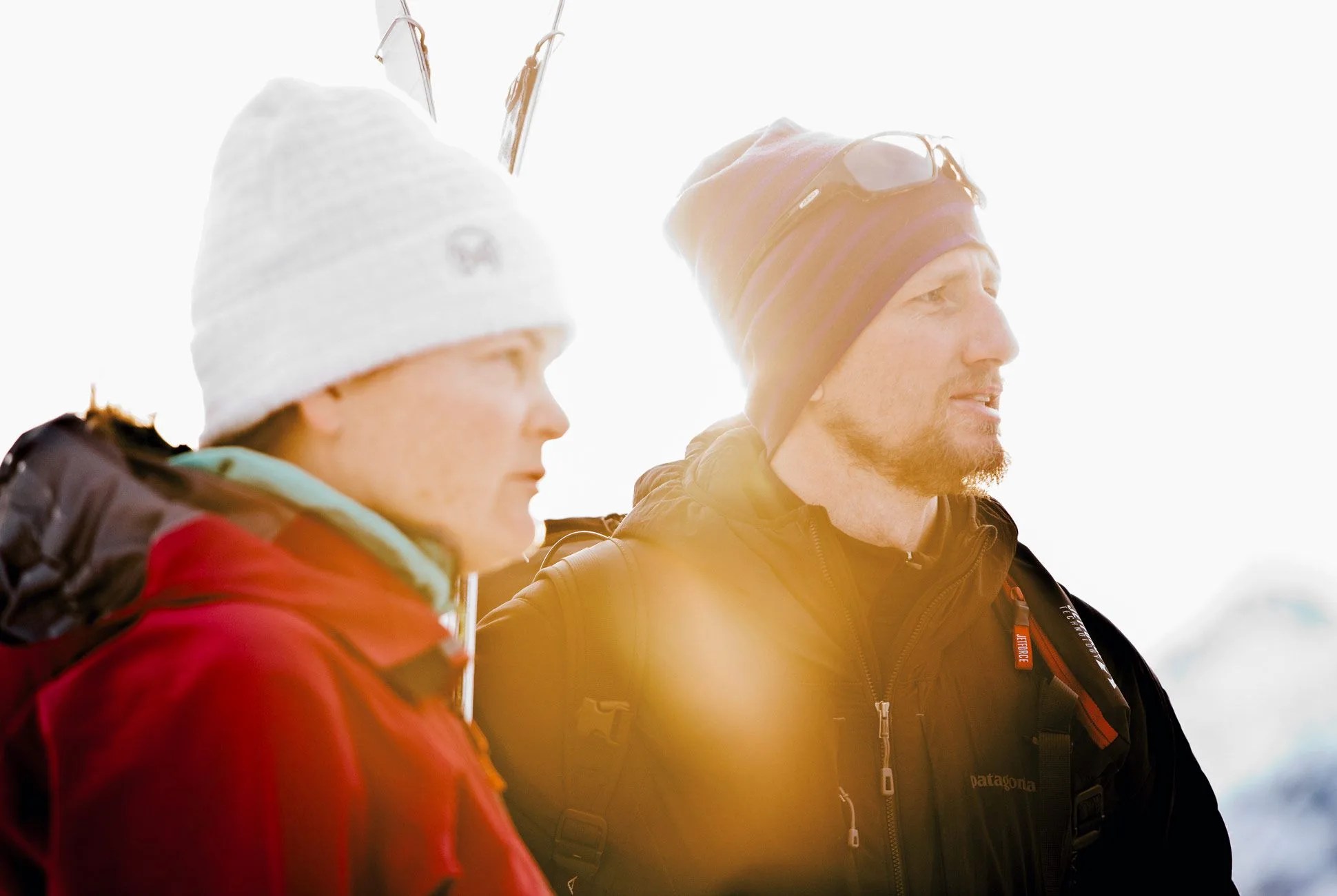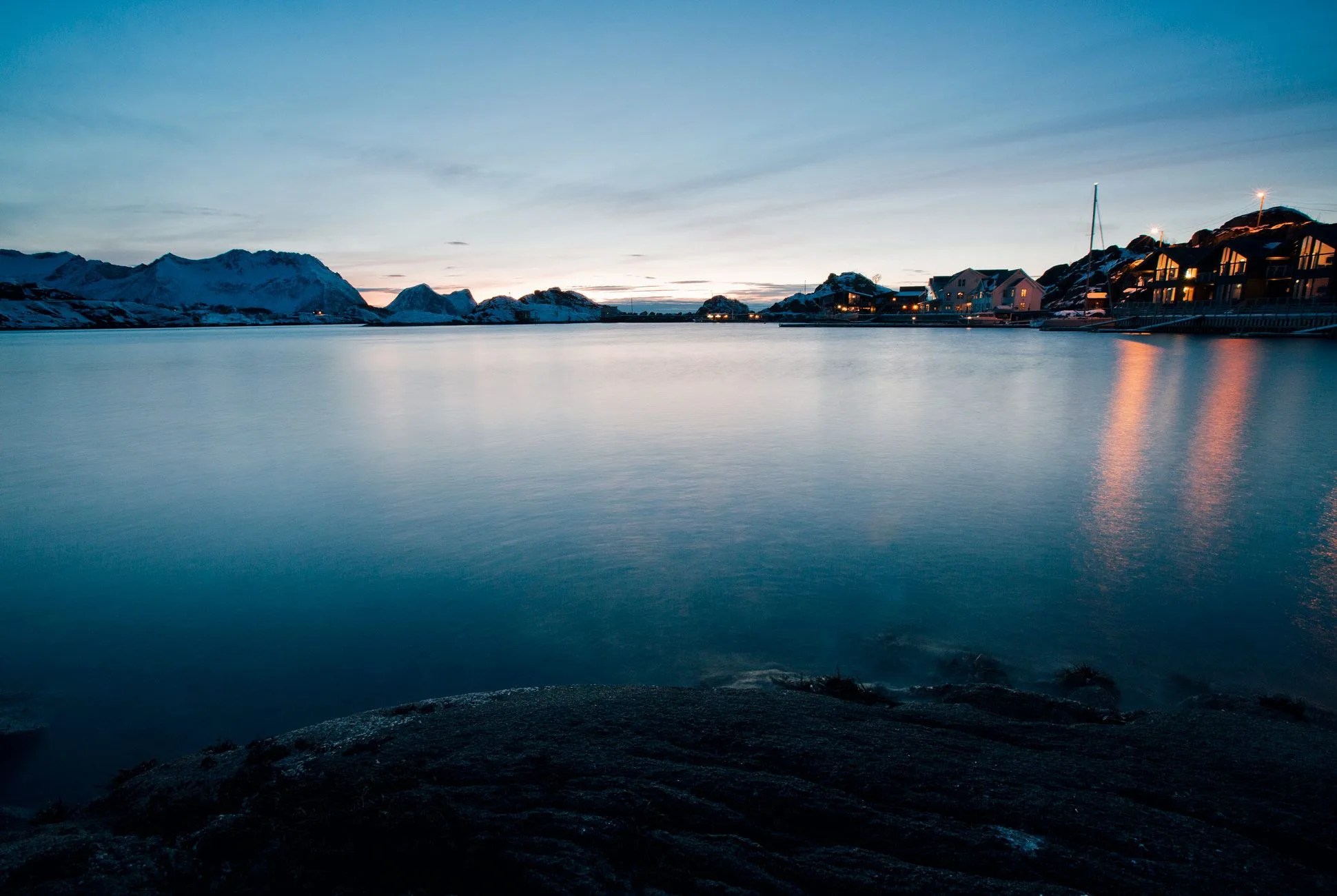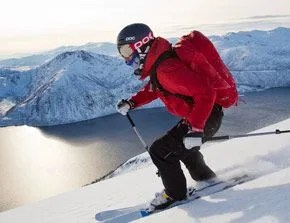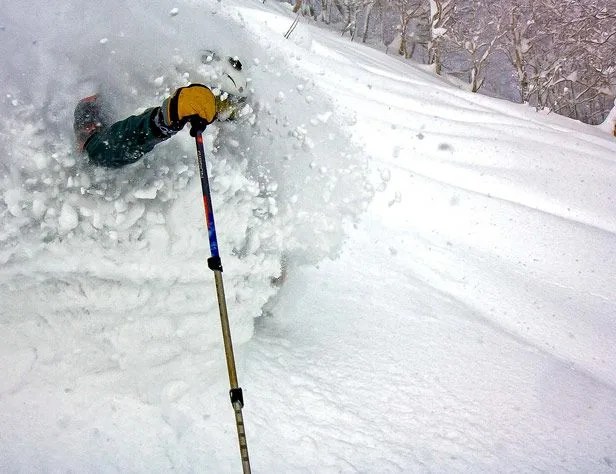8 photos
There was no one here at all. Even the reindeer had gone, leaving behind ribbons of Kool-Aid-orange piss in the hard-pack. From the ridge where we stripped our skins, we could see salmon pens at the end of the fjord, an outbuilding on the frozen banks. That was it for civilization, for any signs of life, really, save reindeer urine. To the south and east, hundreds of square miles of rolling massifs broke up into open country, then at their easterly limit climbed to the horizon. To the west, a coastal tongue of cut-bank crags and black-water bays shone against the sky.
A bunch of us had skinned up from the road, a 2,700-foot, haul-ass alpine ascent in two hours, the aftershocks visible on some more than others. My ankles were meatloaf, swollen and Twizzler red. While the rest of my team toasted our summit, I fumbled with skis, boots, and bindings, all of a brutalist design, thousands of dollars of state-of-the-art ski tackle. I raved, sputtered, cried out, feebly, to no one in particular. It’s a poor craftsman… Still, I thought I made some valid points.
We clipped-in and headed back down. Straight down, through rollers of snow that splashed over my shoulders and rooster-tailed behind me. Just like that, I was wearing a white suit, baptized in Nordic powder, the stuff a Midwestern kid could invent growing up in a low-altitude void (my home mountain vertical drop: 240-feet). It wasn’t the same snow I knew in Michigan, where we screamed across toboggan ice and wore jeans under our bibs to absorb wipeout burns. This was pearly, unfamiliar, high-flying matter — about 13 feet of it, all told — so inviting and yet corresponding so poorly to my anaerobic threshold that I nearly barfed.
But I forgot my ankle pain and doubled over in laughter as we spun into a glade the color of summer wheat. The trees, some kind of dwarf birch, were spaced widely like an orchard. The eight of us dipped under frost-riven bows while floating downward, sun on our cheekbones. It was all I could do to keep my skis in front of me, until I no longer could, and went cartwheeling, landing in pillows of white. We skied straight to the van, which was laden with cold beer. As I pressed a bottle to alternating ankles, I tried explaining why none of this made sense. Something was wrong. This place was too good to be true. Low-angle sea-to-summit approaches, thick mattings of snow, a landscape of perennial quiet, and nobody seemed to know about it.
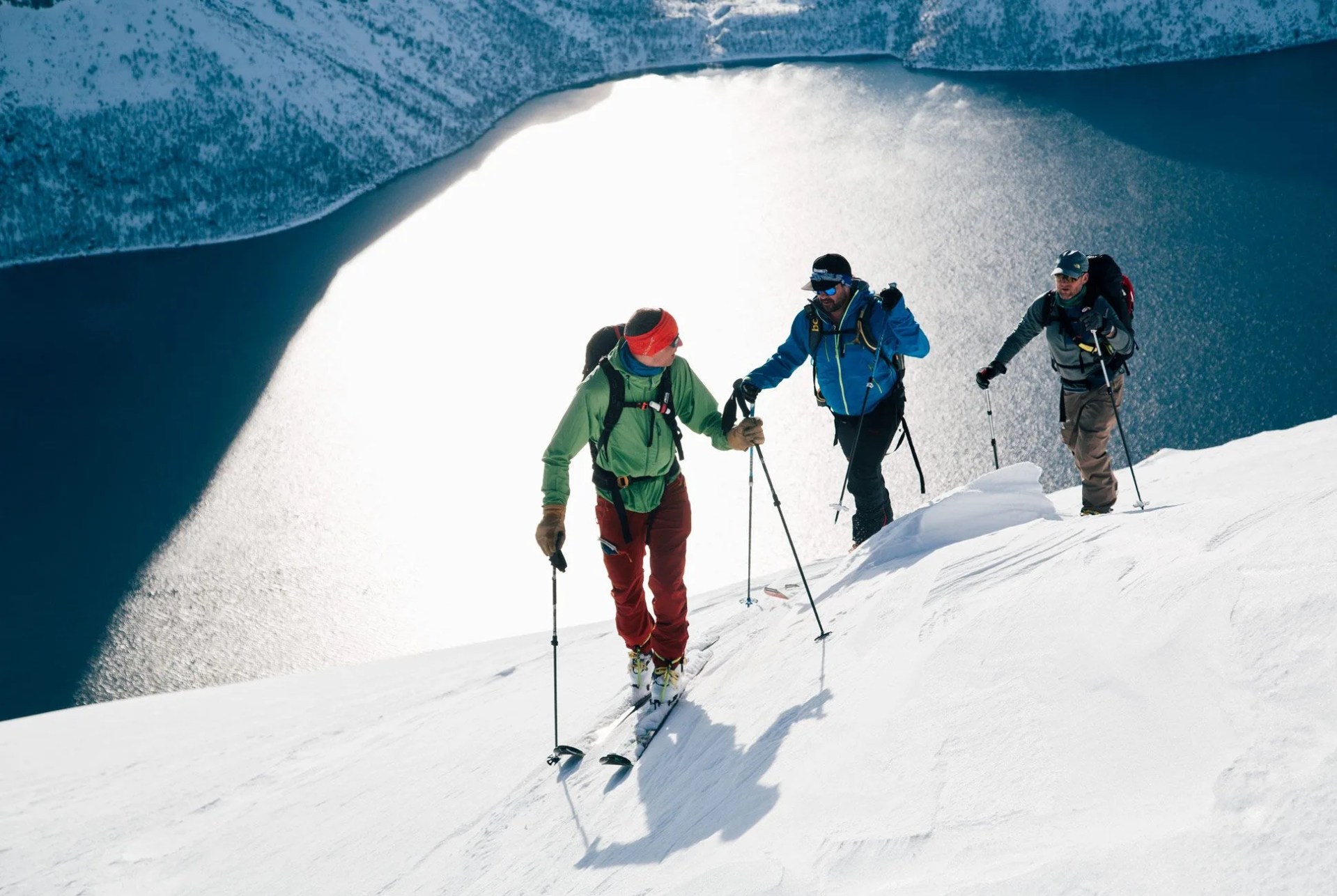
It’s difficult to travel in Norway and not be stunned by the natural beauty, but Senja, located in a far northwest tip, is something else. It doesn’t seem to derive from this world. In Greek myth, the distant north was the winter home of Apollo, his chariot drawn here by pairs of white swans. Hyperborea, it was called (Boreas was the Greek god of the north wind, as in aurora borealis), was a realm of endless warmth, free of warfare and disease, where, Aeschylus says, an eagle-lion hybrid, the Griffin, inhabited golden peaks. There were no signs of griffins, but it was easy to see why the place so fired the Greek muse.

